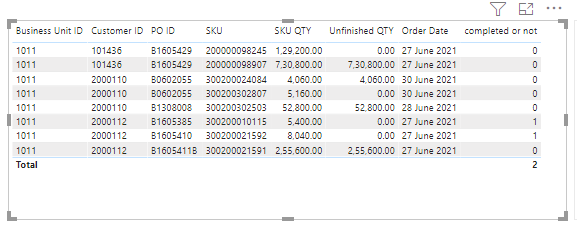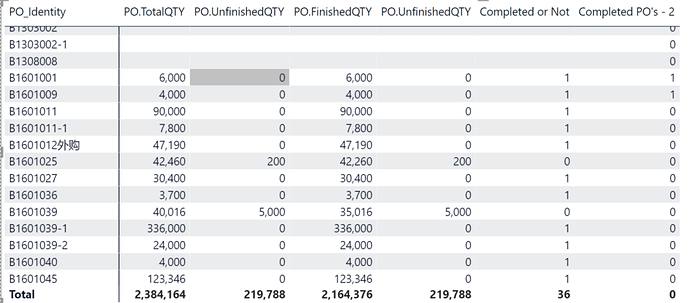Hi all,
I need help in DAX coding.
In my company, multiple SKUs could share a same PO number, however, some SKUs are produced and finished earlier than others. So, the PO status tracking file I got from our ERP system looks like this
For example PO ID B0602055 and B1605429 have one SKU finished while another one is pending production.
I need to find out how many POs are complete fininshed, (like B1605385 and B1605410). I tried a few search and couldn’t find a hit. My closed approach ends up like this.

PO.Countfinished =
COUNTAX( FILTER(SUMMARIZE(F1_Manufacture_PO, ‘D1_Support_BusinessUnit’[BUID],F1_Manufacture_PO[PO_ID],F1_Manufacture_PO[Unfinished QTY] ), [PO.Unfinished QTY] = 0 ), [PO.Unfinished QTY]= 0)
F1_Manufacture_PO is the PO fact table, it is filtered by BU support table D1_Support_BusinessUnit.
My DAX code count each row of unfinished QTY = 0 instead of aggregate then count, could some expert help me on this?
Original PO file from our ERP system is attached.
Thank you.
James
PO File.zip (12.7 KB)






